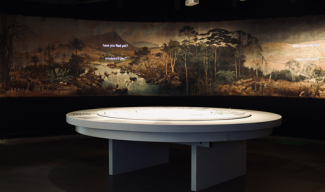
The Congo Panorama 1913. Colonial illusion exposed
What's hiding behind your screen?
Starting 28 November 2025OPENING HOURS
- Opening hours:
Tuesday - Friday: 10 am - 5 pm
Weekends: 10 am - 6 pm - Closed on Monday, 1 January, 1 May and 25 December


Guided tours for individual visitors
Step back in time to 1913 and discover the Congo Panorama, a monumental work that captivated thousands of visitors at the Ghent World Exhibition.
MORE INFORMATION



